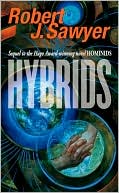Category Books
- Fiction Books & Literature
- Graphic Novels
- Horror
- Mystery & Crime
- Poetry
- Romance Books
- Science Fiction & Fantasy
- Thrillers
- Westerns
- Ages 0-2
- Ages 3-5
- Ages 6-8
- Ages 9-12
- Teens
- Children's Books
- African Americans
- Antiques & Collectibles
- Art, Architecture & Photography
- Bibles & Bible Studies
- Biography
- Business Books
- Christianity
- Computer Books & Technology Books
- Cookbooks, Food & Wine
- Crafts & Hobbies Books
- Education & Teaching
- Engineering
- Entertainment
- Foreign Languages
- Game Books
- Gay & Lesbian
- Health Books, Diet & Fitness Books
- History
- Home & Garden
- Humor Books
- Judaism & Judaica
- Law
- Medical Books
- New Age & Spirituality
- Nonfiction
- Parenting & Family
- Pets
- Philosophy
- Political Books & Current Events Books
- Psychology & Psychotherapy
- Reference
- Religion Books
- Science & Nature
- Self Improvement
- Sex & Relationships
- Social Sciences
- Sports & Adventure
- Study Guides & Test Prep
- Travel
- True Crime
- Weddings
- Women's Studies
Hybrids (Neanderthal Parallax Series #3) » (~)

Authors: Robert J. Sawyer
ISBN-13: 9780765349064, ISBN-10: 076534906X
Format: Mass Market Paperback
Publisher: Doherty, Tom Associates, LLC
Date Published: November 2004
Edition: ~
Author Biography: Robert J. Sawyer
Robert J. Sawyer was born in Ottawa and lives in Mississauga, Ontario, Canada.
Book Synopsis
"The genre's northern star-in fact, one of the hottest SF writers anywhere."
-Maclean's Magazine
"Hi-tech Neanderthals from a parallel continuum, with a social system like none we ever heard of. Can two very different people bridge that gap? While our world begins changes we can only try to understand. In Humans, Sawyer gives us a rich mix of mind-stretching concepts and personal crises."
--F. M. Busby
"Sawyer has carried the banner of Asimovian science-fiction into the twenty-first century. Hominids is based in cutting-edge contemporary science--paleoanthropology, quantum computing, neutrino astronomy, among others--and furnished at the same time with touching human (and parahuman) stories. Precise, detailed, and accomplished. The next volume is eagerly anticipated."
-- Robert Charles Wilson
In Hominids, Nebula Award-winning author Robert J. Sawyer introduced a character readers will never forget: Ponter Boddit, a Neanderthal physicist from a parallel Earth who was whisked from his reality into ours by a quantum-computing experiment gone awry-making him the ultimate stranger in a strange land.
In that book and in its sequel, Humans, Sawyer showed us the Neanderthal version of Earth in loving detail-a tour de force of world-building; a masterpiece of alternate history.
Now, in Hybrids, Ponter Boddit and his Homo sapien lover, geneticist Mary Vaughan, are torn between two worlds, struggling to find a way to make their star-crossed relationship work. Aided by banned Neanderthal technology, they plan to conceive the first hybrid child, a symbol of hope for the joining of their two versions of reality.
But after an experiment shows that Mary's religious faith--something completely absent in Neanderthals - is a quirk of the neurological wiring of Homo sapiens' brains, Ponter and Mary must decide whether their child should be predisposed to atheism or belief. Meanwhile, as Mary's Earth is dealing with a collapse of its planetary magnetic field, her boss, the enigmatic Jock Krieger, has turned envious eyes on the unspoiled Eden that is the Neanderthal world . . . .
Hybrids is filled to bursting with Sawyer's signature speculations about alternative ways of being human, exploding our preconceptions of morality and gender, of faith and love. His Neanderthal Parallax trilogy is a classic in the making, and here he brings it to a stunning, thought-provoking conclusion that's sure to make Hybrids one of the most controversial books of the year.
"Robert Sawyer hits another SF homerun with Hominids: an utterly intriguing conceptual seed, state-of-the-scientific-arts theory, challenging social consciousness, and characters you want to take home for dinner."
--Jane Fancher
Publishers Weekly
Canadian writer Sawyer brings his Neanderthal Parallax trilogy to a close, leaving some loose ends that beg for a follow-up further exploring the interaction of two parallel worlds: the overcrowded and polluted one we're used to and another inhabited by highly intelligent and civilized Neanderthals. In the earlier books (Hominids and Humans), physicist Ponter Boddit got translated from the Neanderthal world to ours, where he fell in love with geneticist Mary Vaughn. The couple joined with people of good will from both worlds to keep the link open. Now, though, it's time to consider the implications of such a continuing connection. If people have trouble getting along because of such distinctions as sex and race, how will they be able to co-exist with members of another species? Some individuals see anyone different as a rival, a threat that must be destroyed. Others coldly calculate how to seize new territory for "humanity." Sawyer's characters are less interesting for who they are than for what they are-or what they represent. Still, his picture of the unspoiled Neanderthal world is charming, and he raises some provocative questions. If, for example, only Earth-humans have brains capable of religious belief, should Ponter and Mary genetically design their child with that ability or not? It all amounts to some of the most outrageous, stimulating speculation since Robert A. Heinlein's Stranger in a Strange Land questioned our tired, timid conventions. (Sept. 4) Copyright 2003 Reed Business Information.
Table of Contents
Subjects
 Alternate Realities
Alternate Realities  Alternate History
Alternate HistoryScience Fiction & Fantasy
 High-Tech & Hard Science Fiction
High-Tech & Hard Science Fiction  Science Fiction - Biotech / Nanotech
Science Fiction - Biotech / NanotechFiction Books & Literature
 Science Fiction & Fantasy
Science Fiction & Fantasy  Alternate Realities
Alternate RealitiesFiction Books & Literature
 Science Fiction & Fantasy
Science Fiction & Fantasy  High-Tech & Hard Science Fiction
High-Tech & Hard Science Fiction
